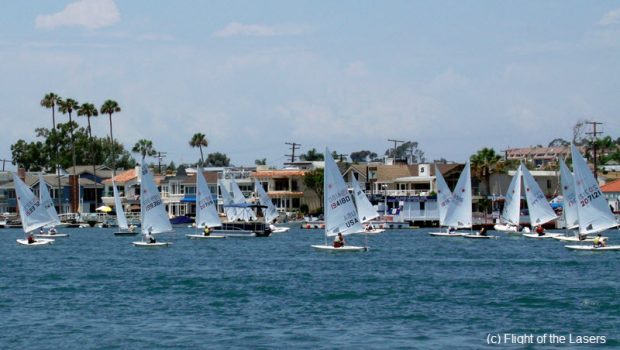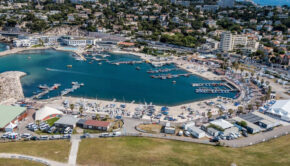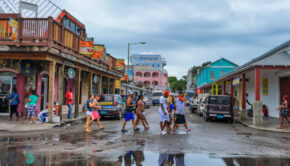Open Letter to Sailing Community about Safety
Published on September 5th, 2017
by Jack Gierhart, CEO of US Sailing
From all of us at US Sailing, we hope you have had an enjoyable summer sailing season.
As many of you are aware, the sailing community experienced several tragic incidents on the water over the past several months that have impacted the broader boating community around the county and the entire marine industry.
All of us at US Sailing – our staff, Board of Directors, and volunteers – are deeply saddened be these tragedies. Our thoughts go out to affected families and communities as they navigate through these very difficult times. We will look to assist these sailing communities as they assess the accidents, and work together to prevent incidents like this in the future.
Our commitment to safety is paramount at US Sailing. We endeavor to advance safety in our sport by reviewing and improving current best practices in safety procedures, protocol and equipment through advanced innovation, and education. We will continue to champion the many positive lessons and opportunities that sailing offers, while striving to ensure sailing remains as safe as possible.
Through it all, sailing remains one of the safest water-based recreational activities. Sailing accounts for an extremely small percentage of the total boating accidents and an even smaller portion of the fatalities. A lot of this has to do with the fact that safety, and respect for the weather and waters has always been a priority for sailors. See the U.S. Coast Guard Recreational Boating Statistics Report for 2016 (Pages 48-51).
These incidents should not dampen our passion nor discourage people from participating, but rather serve as reminders and impress upon all of us the importance of diligence as we plan, organize and participate in upcoming events.
Over the years, US Sailing has conducted several independent reviews of sailing accidents. Most of these reviews come at the request of the U.S. Coast Guard and were conducted by panelists assembled from US Sailing’s Safety at Sea Committee focused on improving safety guidelines for racing, communication between sailors and race organizers, and training for race officials running offshore races.
Our engagement with various state and federal government initiatives to legislate safety has reinforced the importance of achieving a balance between education and regulation. Education, resources and awareness along with a balanced, intelligent legislative strategy is going to deliver the best results and keep sailing safe as possible.
In 2016, US Sailing certified over 2,000 instructors through the Small Boat Level 1 Instructor Program, with thousands more benefiting directly from the training. To support people’s aspiration for more education, specifically in the area of safety, we continue to develop products and programs that help support this demand.
To accomplish that, US Sailing is fortunate to have a group of subject matter experts, volunteers known as the National Faculty, who come together from the various departments to serve as a “think tank” to exchange new ideas and best practices. Through their efforts, the National Faculty developed the Small Boat Level 2 Instructor course, which provides hands-on experience with capsize recoveries and how to prevent entrapments.
Additionally, a complete Safety at Sea online course is now being offered that provides a standalone platform for safety education appropriate for all sailors and that complements the intensive hands-on seminars for offshore sailors.
Our Safety at Sea courses are moderated and taught by experienced and life-long sailors. They are designed for sailors of all types and levels and appropriate inshore, coastal and offshore sailing. This curriculum is certified by US Sailing, with a special focus on local conditions and challenges of the host organization’s sailing area.
Over the past six years, US Sailing has facilitated a US Coast Guard Grant to create National On-Water Standards (NOWS). Through a collaborative effort with industry leaders and the American Boat and Yacht Council (ABYC), we have helped create an American National Standard (ANS) for recreational sailboat operation.
This ANS identifies the fundamental skills operators should be able to demonstrate as a result of receiving entry-level instruction in sailing. It is freely available to course designers and instructors for their use in designing and delivering high quality, skills-based instruction in sailing that meets or exceeds the national standard. The National Sail Standard is available for free download from ABYC’s online store.
We regularly focus on the topic of safety when determining the tracks for presentations and group discussions at our signature US Sailing educational events, like the National Sailing Programs Symposium (NSPS) and the Sailing Leadership Forum. Regional Symposiums, hosted by sailing organizations around the country, allow for these discussions to take place that address local and regional safety and weather related issues.
To help you prepare for your upcoming events and programs, below are some resources to consider that can assist you in your planning and execution. This is not an all-inclusive list, but highlights some key areas of importance regarding safety.
Quick Access Safety Resources
- Learn more about US Sailing’s Safety at Sea Courses.
- The Burgee Insurance Program by Gowrie Group offers a comprehensive group of safety materials and resources including an Emergency Action Planning Template, Junior Sailing Safety Guide, and a Yacht Club Safety Manual. Access these resources.
- Understanding Electric Shock Drowning: The Gowrie Safety Report
- Are electrical hazards at your sailing facility endangering your sailors? Find out how to address these hazards with your local authorities.
- Check out this detailed Emergency Action Plan from Mentor Harbor Yacht Club who drafted this for their USA Junior Olympic Sailing Festival.
- Case Study: An Emergency Action Plan Report from OCSC by Rich Jepsen and Steve Saul
- Implementing an Offshore Safety and Preparedness Plan by Chuck Hawley and Sally Lindsay Honey
- Learn more about preparing your safety boat.
- Head injuries: Information and customizable templates about concussions can be found on the CDC website. Your state may have additional requirements that you will need to follow.
- Crew Overboard Prevention: How to Remain Aboard
- Weather Forecasting: Thunderstorms and Squalls by Stan Honey and Ken Campbell
- Independent Incident Report: Severn Sailing Association – 420 tragedy (Annapolis, 2011)
- Advantages of US Powerboating’s Safe Powerboat Handling Courses by Rob Crafa and Lynn Lynch
- WATCH this video on Club 420 safety.
In closing, we thank all of the volunteers throughout our nationwide community of sailors who prioritize safety and the sharing of knowledge and best practices around this critical topic. We will continue to evaluate these sailing related incidents and work collaboratively with our volunteer subject experts to offer the best, most effective standardized safety programming in the country.









 We’ll keep your information safe.
We’ll keep your information safe.